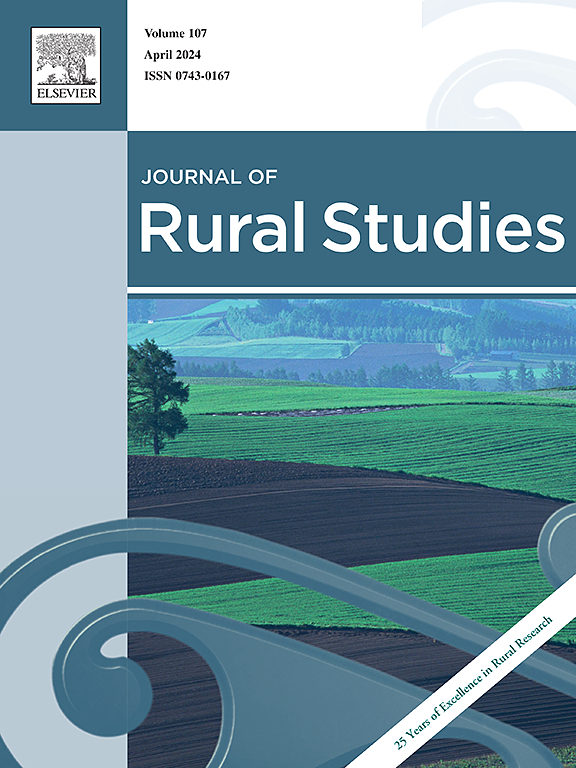Navigating spatial justice: Exploring municipal planners’ logics in differentiated village planning
IF 5.1
1区 社会学
Q1 GEOGRAPHY
引用次数: 0
Abstract
An amendment to the Danish Planning Act in 2019 mandated municipalities to incorporate strategies for the differentiated development of viable villages. This marks the first national initiative in Denmark requiring strategic village development within statutory municipal planning. While municipalities have considerable freedom to adapt these strategies to local conditions, existing plans, and ongoing projects, this new requirement has led to diverse approaches to strategic planning across the country.
Drawing on data from 37 qualitative interviews with planners in Danish rural municipalities, we analyse how planners differentiate between villages at the municipal level, basing their decisions on both institutional and structural factors. We introduce a spatial justice matrix, encompassing dimensions of procedural and distributive justice alongside principles of equality and equity, to illustrate how municipalities' strategies for village development embody distinct interpretations of spatial justice. Some municipalities adopt a participatory, demand-driven approach, akin to a "first come, first served" principle, while others prioritize local service provision to distribute resources more equitably in line with targeted development objectives. Although each approach aligns with a different interpretation of spatial justice, these variations raise critical questions about the meaning and attainment of spatial justice in practice. As municipalities navigate these interpretations, disparities in development outcomes emerge across municipalities, highlighting a need for further discussion on inter-municipal equity and cooperation.

导航空间正义:探索城市规划者在差别化村镇规划中的逻辑
2019年《丹麦规划法》的一项修正案授权市政当局纳入可行村庄的差异化发展战略。这是丹麦第一个要求在法定市政规划范围内进行战略性村庄发展的国家倡议。虽然市政当局有相当大的自由来根据当地条件、现有计划和正在进行的项目调整这些战略,但这一新要求导致全国各地的战略规划方法多样化。根据对丹麦农村城市规划者进行的37次定性访谈的数据,我们分析了规划者如何根据制度和结构因素做出决定,在市政一级区分村庄。我们引入了一个空间正义矩阵,包括程序和分配正义的维度以及平等和公平原则,以说明市政当局的村庄发展战略如何体现对空间正义的不同解释。一些城市采取参与性、需求驱动的方式,类似于“先到先得”的原则,而另一些城市则优先提供当地服务,以便根据有针对性的发展目标更公平地分配资源。尽管每种方法都与空间正义的不同解释相一致,但这些差异提出了关于空间正义在实践中的意义和实现的关键问题。随着城市对这些解释的理解,城市之间的发展结果出现了差异,突出表明需要进一步讨论城市间的公平与合作。
本文章由计算机程序翻译,如有差异,请以英文原文为准。
求助全文
约1分钟内获得全文
求助全文
来源期刊

Journal of Rural Studies
Multiple-
CiteScore
9.80
自引率
9.80%
发文量
286
期刊介绍:
The Journal of Rural Studies publishes research articles relating to such rural issues as society, demography, housing, employment, transport, services, land-use, recreation, agriculture and conservation. The focus is on those areas encompassing extensive land-use, with small-scale and diffuse settlement patterns and communities linked into the surrounding landscape and milieux. Particular emphasis will be given to aspects of planning policy and management. The journal is international and interdisciplinary in scope and content.
 求助内容:
求助内容: 应助结果提醒方式:
应助结果提醒方式:


